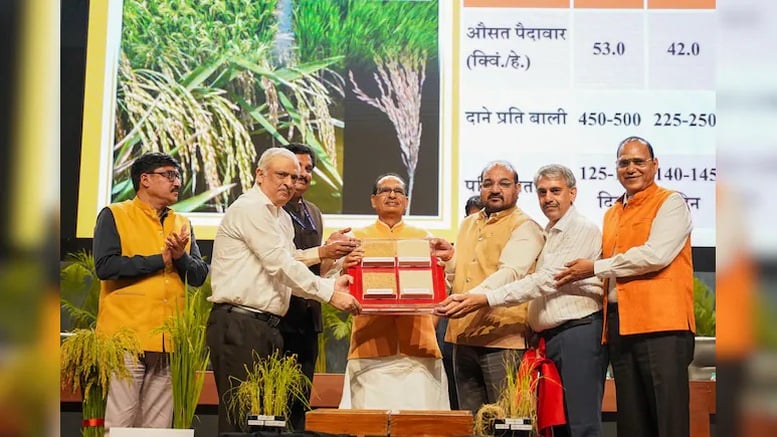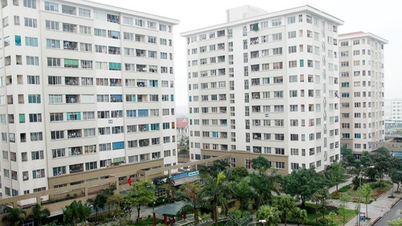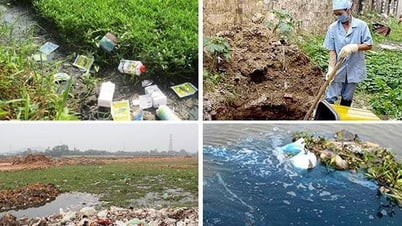
The first genetically modified rice varieties announced in India are considered a smart solution to cope with current climate change – Photo: ndtv.com
The Indian Institute of Agricultural Research (ICAR) has announced a historic breakthrough by successfully developing the world’s first two Genome Edited (GE) rice varieties using CRISPR-Cas SDN-1 technology. The launch event was presided over by Agriculture Minister Shivraj Singh Chouhan at ICAR’s NASC complex.
“These rice varieties (named ‘Kamala – DRR Dhan-100’ and ‘Pusa DST Rice 1’) will consume less water and will also help reduce greenhouse gas emissions,” Minister Shivraj Singh Chouhan stressed.
The two new rice varieties are the result of research by the Indian Rice Research Institute and the Indian Agricultural Research Institute, improving two popular rice varieties, Samba Mahsuri (BPT-5204) and Cottondora Sannalu (MTU-1010). Unlike traditional genetically modified (GM) crops, gene-edited plants do not contain foreign genes but use the "Cas" enzyme from the CRISPR-Cas system to edit native genes, thereby enhancing the natural characteristics of the crop. These rice varieties promise to increase yield per hectare by up to 30% and can shorten harvest time by 15–20 days compared to existing varieties.
Gene editing technology improves yield, quality and drought tolerance in rice plants
The first variety – IET-32072, also known as ‘Kamala’ – has a modified cytokinin oxidase 2 (Gn1a) gene, which increases the number of grains per panicle, thereby increasing yield. ‘Kamala’ has an average yield of 5.37 tonnes per hectare and a potential yield of up to 9 tonnes per hectare, much higher than the original Samba Mahsuri variety (4.5 tonnes and 6.5 tonnes per hectare). In addition, this variety has a shorter growing period (130 days compared to 145 days), but still retains the original quality and advantages.
The second variety – IET-32043, also known as Pusa DST Rice 1 – has been modified with the DST gene to increase its tolerance to drought and salinity. It is known for its high yield (up to 7 tonnes/ha), short growth period (125–130 days), and long, slender grains. Pusa DST Rice 1 has an average yield of 3.508 tonnes/ha in inland saline soil conditions, 3.731 tonnes/ha in alkaline conditions, and 2.493 tonnes/ha in coastal saline conditions, compared to the respective yields of 3.199 tonnes/ha, 3.254 tonnes/ha, and 1.912 tonnes/ha of the parent variety. Thus, Pusa DST Rice 1 has a yield that is 9–30% higher than the parent variety, depending on soil conditions.
Both varieties have been successfully tested on a large scale in 2023–2024 through the All India Coordinated Research Project on Rice . The Indian Agricultural Research Institute said that since the two gene-edited varieties do not contain foreign DNA, they are exempted from the biosafety regulations under the Environment Protection Act 1986 that apply to genetically modified crops. This significantly shortens the testing and approval time before commercial cultivation.
The Indian government has shown its commitment to developing gene editing technology in agriculture by allocating around US$60 million in its 2023–24 budget to support research into gene-edited crops. ICAR expects this breakthrough to pave the way for the application of gene editing technology in other important crops such as pulses, maize, wheat and oilseeds – to increase yield, improve quality and make them more resilient to harsh conditions.
In March 2022, the Indian Ministry of Environment, Forests and Climate Change announced that gene-edited plants that do not contain foreign DNA will be exempted from the regulatory framework for genetically modified organisms. Accordingly, these plants will be exempted from biosafety assessment under Section 20 of the Production, Use, Import, Export and Storage of Genetically Modified Microorganisms/Organisms/Cells Act, 1989.
The official guidance on safety assessment of gene-edited crops was then published on 17 May 2022. This is considered an official legal document that guides the roadmap for the sustainable development and application of gene-editing technology, including the legal process to be followed for commercialization of gene-edited crops.
In the past five years, Asian countries have shown their efforts to accelerate the process of completing the legal framework for scientifically- oriented gene-edited crops. Governments have shown their support and openness to this technology - considering it an important solution in the development strategy of each country and responding to the increasing climate change in the region. Japan is one of the pioneering countries in the Asian region when it allowed the commercialization of gene-edited tomatoes with high GABA content. In China, the regulation on genetically modified crops covers gene editing, however, the licensing process and procedures for gene-edited crops have been shortened and simplified many times. Currently, China has also licensed the commercialization of high-oleic soybeans in oil that were created by gene editing. Bangladesh applies similar regulations to India, with case-by-case exceptions for SDN-1 and 2 products that do not contain foreign DNA.
In Southeast Asia, many countries have been reviewing their regulatory frameworks and have made rapid progress in the past five years in providing specific guidelines for gene editing technology. The Philippines is the regional leader in providing regulatory guidelines from 2022 and has already licensed the use and commercialization of several gene-edited crops.
Thailand and Singapore approved regulatory regulations for this crop in August 2024. In these countries, regulations for gene-edited crops consider the final product, if the final product does not contain foreign genes, or is similar or can be produced by conventional breeding methods, it is considered a conventional crop, and therefore, the same regulations as for conventional crops will apply.
Do Huong
Source: https://baochinhphu.vn/phat-trien-thanh-cong-hai-giong-lua-chinh-sua-gen-dau-tien-tren-the-gioi-102250509092443992.htm





![[Photo] Top players gather at the 2025 Nhan Dan Newspaper National Table Tennis Championship](https://vphoto.vietnam.vn/thumb/1200x675/vietnam/resource/IMAGE/2025/5/23/9ad5f6f4faf146b08335e5c446edb107)
![[Photo] Anh Hoang - Dinh Duc successfully defended the men's doubles championship of the National Table Tennis Championship of Nhan Dan Newspaper](https://vphoto.vietnam.vn/thumb/1200x675/vietnam/resource/IMAGE/2025/5/23/d6ab3bcac02c49928b38c729d795cac6)
























































































Comment (0)